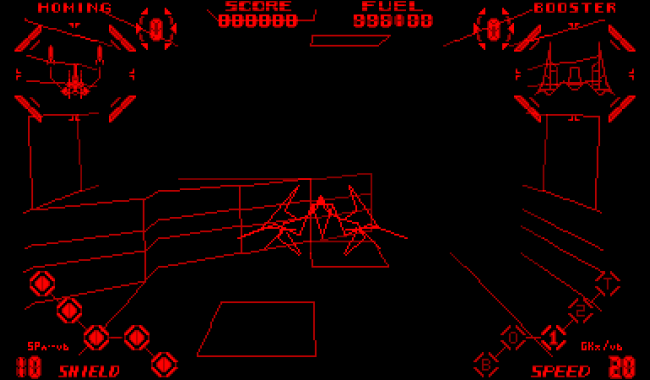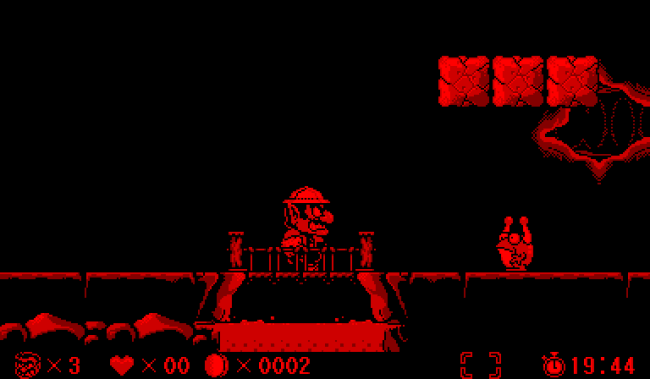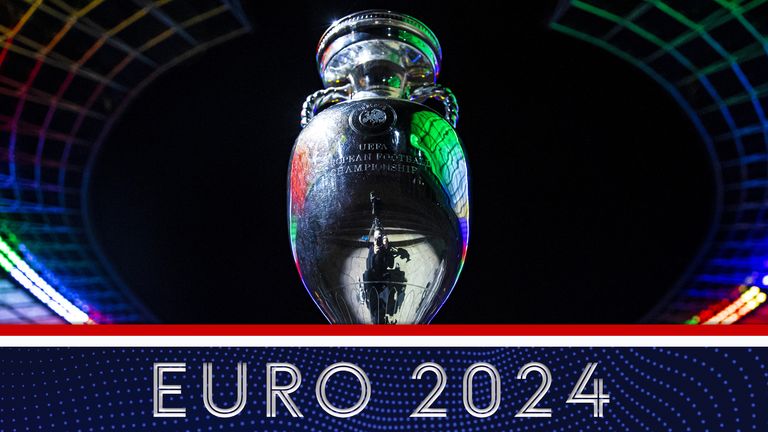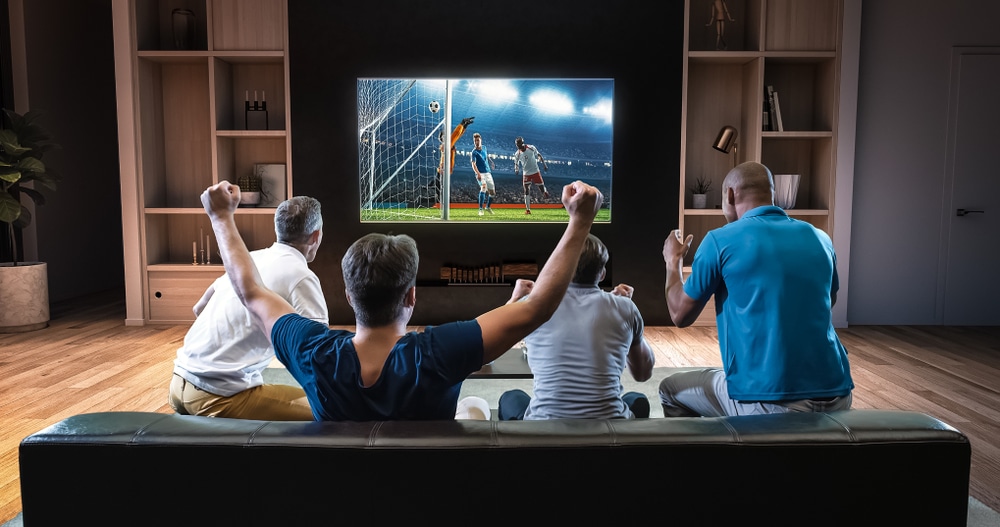
Virtually Forgotten: Nintendo’s Virtual Boy, 25 Years Later

In 1995, Nintendo released an unusual stereoscopic game console called Virtual Boy. It capitalized on the early ’90s media hype for virtual reality, but delivered on none of its promises. Here’s what made the Virtual Boy unique—and why it failed.
A Mislabeled Novelty
The Virtual Boy debuted in Japan on July 21, 1995, and came to the U.S. on August 14 of that same year. Retailing for $179.95 at launch (about $303 in today’s dollars), it was far more expensive than either the Game Boy or Super NES.
Judging from its name and headset-like appearance, anyone who hasn’t used a Virtual Boy would be forgiven for thinking it was a legitimate attempt at a virtual reality console from Nintendo. However, the Virtual Boy wasn’t really VR—that was just its marketing angle. Unfortunately for Nintendo, that angle set up expectations that were way too high to meet at the time.

In reality, the Virtual Boy was more like a beefed-up Game Boy with a stereoscopic display (meaning, it could show visual depth). Its odd form factor required using an awkward table stand. Unlike legitimate attempts at virtual reality, which provide the illusion of being present in a virtual space, there was no strap-on headset, motion tracking, or hand-movement capture on the Virtual Boy.
It was semi-portable, as it was battery powered by default. It required six AA batteries, but an AC adapter was also available. Due to this, it shipped with a relatively low-power CPU that was unable to deliver anything resembling the 3D, polygonal virtual world one would expect.
Instead, the Virtual Boy’s game library mostly relied on traditional console-style games, with 2D sprites that nodded at the system’s stereoscopic capability by using 3D layering tricks. Most of the games could be played just fine without stereoscopic capability.
An Experiment That Became a Stopgap Release
The full story of the creation of the Virtual Boy is complex and fascinating. It began with the invention of a relatively high-resolution, portable display created by the Massachusetts-based Reflection Technology. The display used a single line of red LEDs and a vibrating mirror to create the illusion of a larger display.
Reflection pitched the display to toy and video game companies at the time. The technology finally caught the eye of Nintendo designer, Gunpei Yokoi. Yokoi had previously scored unorthodox successes with the Game Boy, the Game & Watch line, and plastic toys and puzzles.
His design philosophy—which he called “Lateral Thinking of Withered Technology”—was to think of new uses for tech that was already widely used. The simple red LED scanning display with a deep black background fascinated Yokoi. Nintendo humored him when he wanted to use it to develop a portable, headset-based console.

Unfortunately, legal liability worries about EMF radiation exposure, potential eye damage, or injuries sustained while wearing the device during a car accident made Nintendo wary of creating a headset. By the time it became a “standset,” Nintendo had already heavily invested in the custom chips that kept the console’s scaled-back portable capabilities, despite it being limited to desktop use.
Meanwhile, Nintendo was also readying its upcoming Nintendo 64 console, and it was receiving the majority of the company’s R&D budget and attention. Yokoi was even instructed to de-emphasize Nintendo’s star mascot, Mario, on the Virtual Boy to avoid potential competition with the upcoming Nintendo 64.
So, why release such a weird product? According to Nintendo insiders, delays with the highly anticipated Nintendo 64 would have left the company without a new product in the fall of 1995. Meanwhile, its competitors, Sony and Sega, had already released their PlayStation and Saturn consoles.
Nintendo’s absence in the new game market that fall would have damaged its reputation and share price. Therefore, the Virtual Boy was rushed into production as a stopgap product to serve as a distraction until the Nintendo 64 was ready.
Still, public reception to the Virtual Boy was tepid, and the system sold very poorly. Nintendo pulled the plug in Japan just six months after its release and axed it elsewhere in 1996.
Its Best Games: Wario Land and Jack Bros.

Even as a market failure, the Virtual Boy remains a bold experiment in trying something new. It also resulted in some novel hardware, including a more comfortable controller. The twin directional pads and ergonomic grip made it easy to play without having to look at your hands.
The games weren’t bad, either. During its short lifespan, the Virtual Boy hosted only 22 games, most of which were created with fairly high production values. As we mentioned previously, though, few of these required the console’s stereoscopic effect to be played.
As for the standouts, critics generally consider Virtual Boy Wario Land and Jack Bros. to be the system’s two best. Red Alarm, an engrossing 3D wireframe spaceship shooter, remains the most impressive technical accomplishment. The North American pack-in game, Mario Tennis, is fun for quick sessions, but not a particularly remarkable release.
Overall, the Virtual Boy’s very thin, but promising library could have grown much more sophisticated over time. Still, limited to life on a table stand, it could never deliver virtual reality.
Why Did It Fail?

Over the last 25 years, critics have cited dozens of reasons for the Virtual Boy’s failure in the market. These have included (but aren’t limited to) its red-only display, cost, awkward form factor (crouch-to-play), potential to cause headaches and eye strain, as well as not being graphically powerful enough, and so on.
However, Nintendo had succeeded with technologically limited hardware before. The Game Boy (1989) could only display games in a smudgy, pea-green at launch and could have been doomed as a novelty. Of course, it shipped with the killer app, Tetris, which quickly became a cultural watermark for mainstream gaming. It was perfect for quick games on the go.
Virtual Boy had no such killer app, and thus, no real reason to exist as a distinct product. The best game on Virtual Boy, Wario Land, could have easily been made for any traditional 2D game console. Had the Virtual Boy shipped with a must-have gameplay experience, it’s possible customers would have looked beyond all the drawbacks and flocked to the system.
Instead, though, the Virtual Boy remains an historical novelty.
VR Today

Since the Virtual Boy, Nintendo has twice experimented with stereoscopic 3D gaming, first with the Nintendo 3DS in 2011, and, more recently, with the Nintendo Labo VR kit in 2019. The same as the Virtual Boy, few games on the 3DS required stereoscopic display to play properly. In fact, players could turn off the 3D feature, making it a well-executed gimmick that didn’t get in the way of the system’s high-quality software.
The Labo VR kit placed the Nintendo Switch console in a user-folded cardboard contraption that provides a low-resolution stereoscopic experience with toy-like novelty. However, it’s still not “virtual reality” on the level some people might expect.
Other firms, like Oculus, HTC, and Valve, have stepped in over the last decade with impressive virtual reality headsets for consumers. Many consider the Oculus Quest the first practical standalone VR headset. It has a 1440 x 1600 resolution, compared to the Virtual Boy’s 384 x 224. It also includes motion-tracking and two motion-tracking hand controllers.
So, it wasn’t until 2019 that a company could feasibly provide what Yokoi wanted to do in 1995. Will Nintendo ever step into the virtual reality market with a real VR headset? Only time will tell. Until then, however, we can look back and raise a glass to the glorious oddity known as the Virtual Boy.
RELATED: How to Connect GameCube Controllers to the Nintendo Switch







Leave a reply